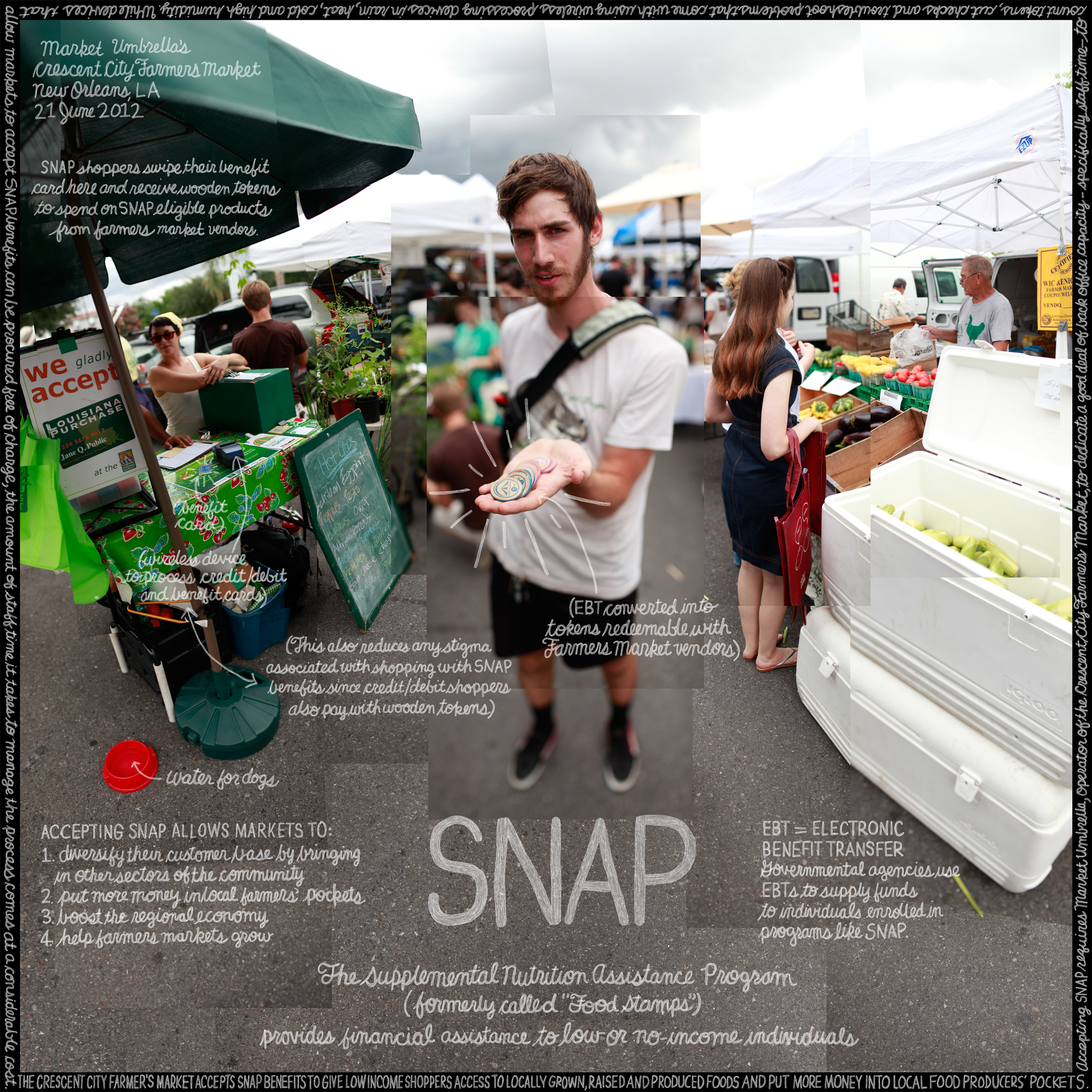Farmers' markets are an ancient method used by farmers worldwide to sell their produce directly to consumers. As U.S. food production became increasingly industrialized and specialized, farmers markets were replaced by brokers and supermarkets. During the past couple of decades, however, farmers markets have rapidly regained popularity in the U.S.
Farmers markets are a melting pot for food culture. It brings together urban and rural farmers, and allows a space for community members to engage. In fact, the number of farmers markets have doubled since 2000, all bursting in celebration of local bounty.
Farmers markets have been popping up in abundance in the last decade — in fact, they’ve more than doubled since 2000! Their popularity arises from more than farm fresh produce; farmers markets improve local neighborhoods, provoke awareness about seasons and environmental issues, and build community!
Watch Farmer Nigel Walker, chef Bryant Terry, and others celebrate the joys of farmers markets in this video.
Karen Washington, coordinator of La Familia Verde Farmers Markets, runs the farmer's market in the 17th Congressional district of the Bronx. The market was started because there was a need for produce that was local, fresh, accessible, and affordable.
"Our market is unique in that it is a collaboration between both urban and rural farmers," says Washington. "We take SNAP, Health Bucks, Wic Coupons, and both Senior and WIC FMNP (farmers market nutrition program) coupons and, of course, cash. It’s win/win situation for the customer and the farmer. We look at our customers as part of the market, and the market part of our community."
The Supplemental Nutrition Assistance Program (formerly called “Food Stamps”) provides financial assistance to low or no-income individuals.
Accepting SNAP allows markets to diversify their consumer base by bringing in other sectors of the community; put more money in local farmers’ pockets; boost the regional economy; and helps farmer’s markets grow!
Title: SNAP
Location: Market Umbrella’s Crescent City Farmers Market
Found on Page 51 in Local: The New Face of Food and Farming in America
"Most of us love the idea of local food systems, but actually building them takes profound commitment, vision, and perseverance. It is in-the-trenches social change work," said Jessica Prentice, professional chef and local food activist.
"In my experience, what’s needed is akin to rebuilding the village after the devastation of a military occupation. Not only must the physical infrastructure be recreated from available materials, but hearts need healing and traumas need to be confronted and worked through. And somehow, amid the wreckage, beautiful and delicious food needs to be made and offered to all who hunger for both food and connection," Prentice continued.
Three things you can do
Whether you are a producer or consumer your role in building a local food system is critical. Farmers markets are a great start to reinforcing a healthy community and healthy environment.
- Prepare before visiting the market. Explore what’s in season, what produce has the lowest environmental impact, and what areas around you host markets and/or CSA drop offs.
- Try something different. Ask vendors about unique produce and ways to prepare it.
- Initiate a local market in your area! If you have the time and enthusiasm to operate a farmers market, don’t hesitate! It will bring an abundance of good to your community.

Do you have a local farmers' market? How often do you visit?
For the past three years, the Lexicon of Sustainability has sought out the foremost practitioners of sustainability in food and farming to gain their insights and experiences on this important subject. What began as a photography project to spread their knowledge has grown to include short films, study guides, traveling shows, a book, and a website where people can add their own terms to this ever-evolving lexicon. See more at www.lexiconofsustainability.com.

